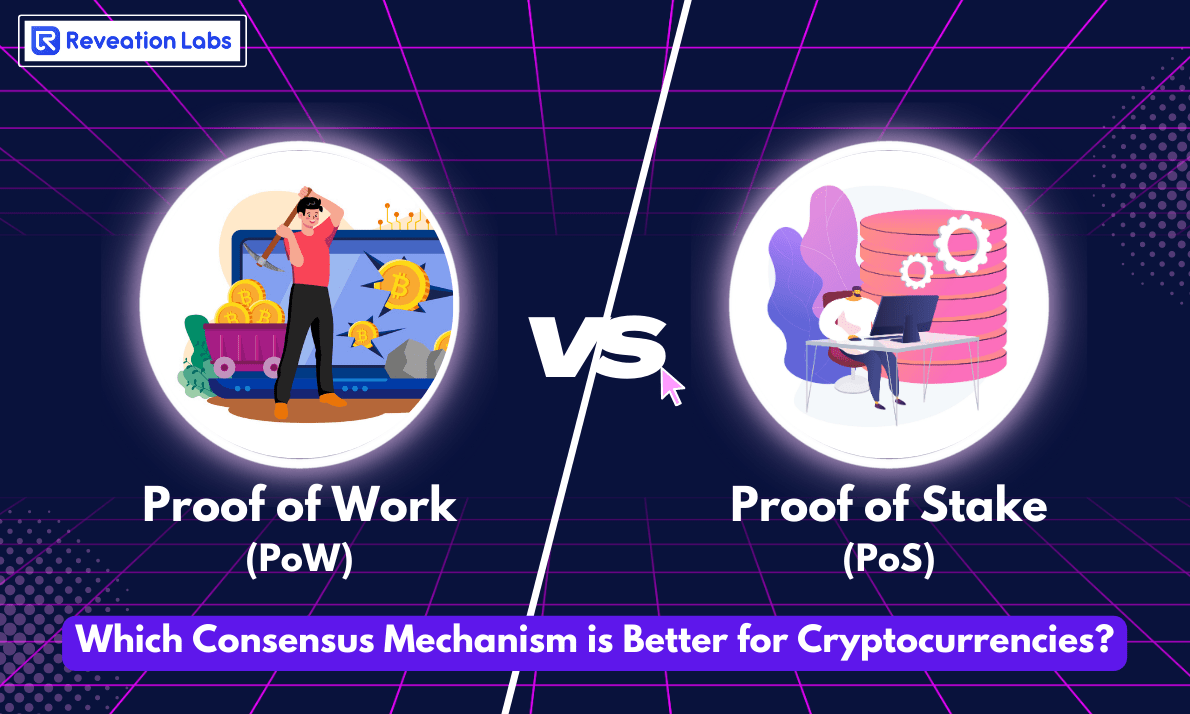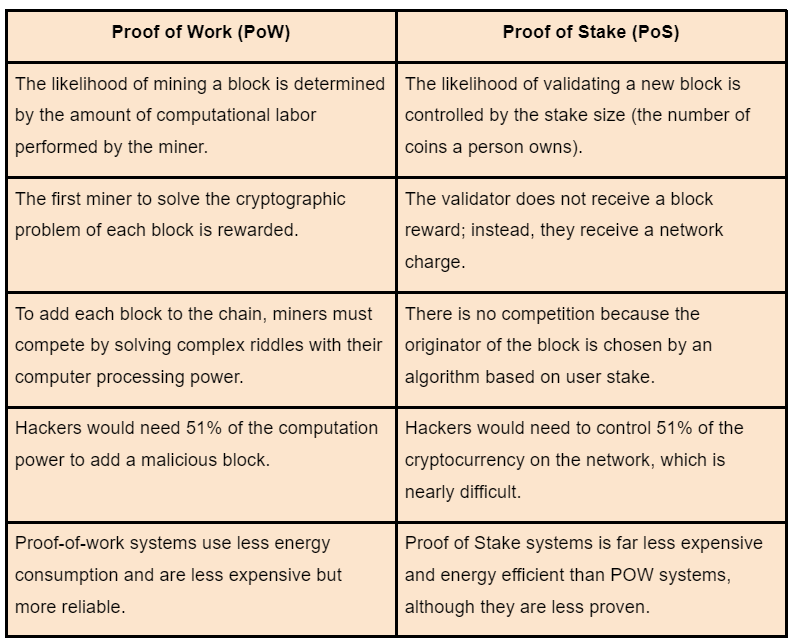Proof of Work vs. Proof of Stake: Which Consensus Mechanism is Better for Cryptocurrencies?

Introduction
Proof of work and proof of stake are both algorithms used to maintain the blockchain secure so that new cryptocurrency transactions can be added. However, there are some distinctions between the two.
To make transactions public, cryptocurrency is decentralized and must be validated by computers. Proof of work and proof of stake both assist users in conducting safe transactions by making it difficult and costly for bad actors to commit fraud. They need members to demonstrate that they have contributed a resource to the blockchain, such as energy, computer power, or money.
The primary distinction between proof of work and proof of stake as a Consensus mechanism is how the blockchain algorithm qualifies and selects users to submit transactions to the blockchain.
What exactly is Proof of Work?
Proof of Work (PoW) is a consensus technique in blockchain technology used to verify and validate transactions and add new blocks to the blockchain. It was originally employed with the establishment of Bitcoin in 2009, and several other cryptocurrencies have subsequently used it.
Miners in a PoW network utilize powerful computers to solve complicated mathematical problems in order to add new blocks to the blockchain. The mathematical problem's difficulty is modified regularly to ensure a consistent rate of block generation.
Miners compete to solve the challenge, and the first miner to do so adds the block and receives a reward in the form of newly minted cryptocurrency. This is referred to as mining.
PoW is supposed to be a resource-intensive mechanism, making effective network attacks difficult and costly. This is because an attacker would need to control most of the network's computational power, which is referred to as a 51% attack.
How does PoW work?
Proof of Work (PoW) is a consensus technique in blockchain technology used to verify and validate transactions and add new blocks to the blockchain. This is how PoW works:
The usage of PoW is intended to be resource-intensive and complicated, making it costly to conduct a successful network attack. A 51% assault requires an attacker to control most of the network's computational power. PoW is a tried-and-true technique that has served Bitcoin and other cryptocurrencies well for many years.
What is exactly Proof of Stake?
Proof of Stake (PoS) is a blockchain technology consensus process used to verify and authenticate transactions and add new blocks to the network. It was introduced as a more energy-efficient and less resource-intensive alternative to Proof of Work (PoW).
Validators, or stakers, must stake a set amount of cryptocurrency as collateral in a PoS network. Validators are randomly chosen to construct new blocks based on the amount of cryptocurrency invested. The more cryptocurrency a validator stakes, the more likely it is that they will be chosen to create a block.
What is the Process of POS?
Proof of Stake (PoS) is a blockchain technology consensus process used to verify and authenticate transactions and add new blocks to the network. This is how PoS works:
Validators' stakes can be reduced: Validators' stakes in cryptocurrency can be reduced if they fail to participate in block building or follow the network's rules.
Which is more important: proof of stake or proof of work?
The choice between Proof of Work (PoW) and Proof of Stake (PoS) is determined by various parameters and the purposes of the blockchain network.
For many years, Bitcoin and many other cryptocurrencies have used the PoW algorithm successfully. However, it is a resource-intensive system that consumes a substantial quantity of electricity, raising environmental impact.
PoS, on the other hand, is intended to be a more energy-efficient and resource-light method that overcomes some of the environmental problems raised by PoW. It is also intended to be less prone to centralization than PoW, implying that it may be more decentralized.
Difference Between Proof of Work vs. Proof of Stake

Conclusion
Cryptocurrencies use two methods to achieve consensus on which new blocks to add to their blockchains: proof of work and proof of stake. Both processes address the challenge of transaction verification without a centralized authority. Proof of stake involves requiring members to stake bitcoin behind the new block they want to be added to the cryptocurrency's blockchain. In contrast, proof of work involves users expending computational effort and electricity to construct a new valid block. Although proof of work makes it hard to attack a cryptocurrency's network, it has a rising environmental cost. Proof of stake saves energy, but it hasn't been widely adopted.
Do you need a trustworthy Blockchain Development Company Reveation Labs has your back. Fashion companies and manufacturers may use our decentralized solutions to increase supply-chain visibility across their various ecosystems. To get started, mail us.
Comments
Post a Comment